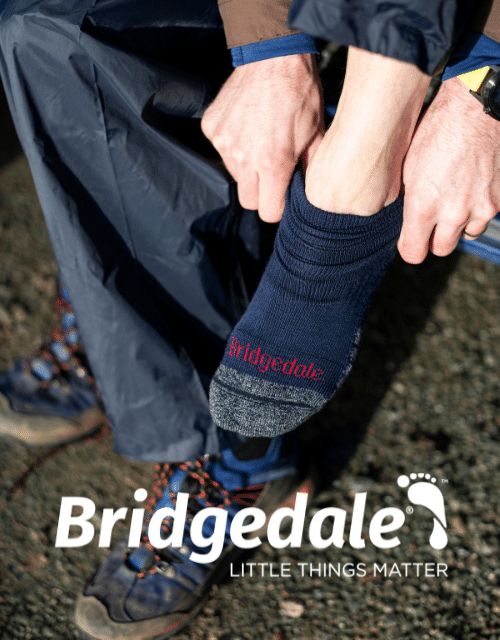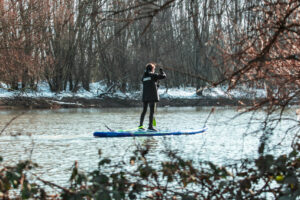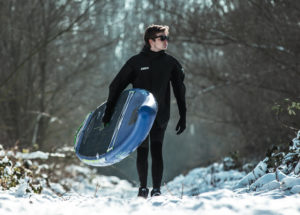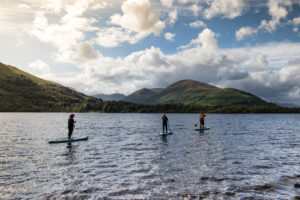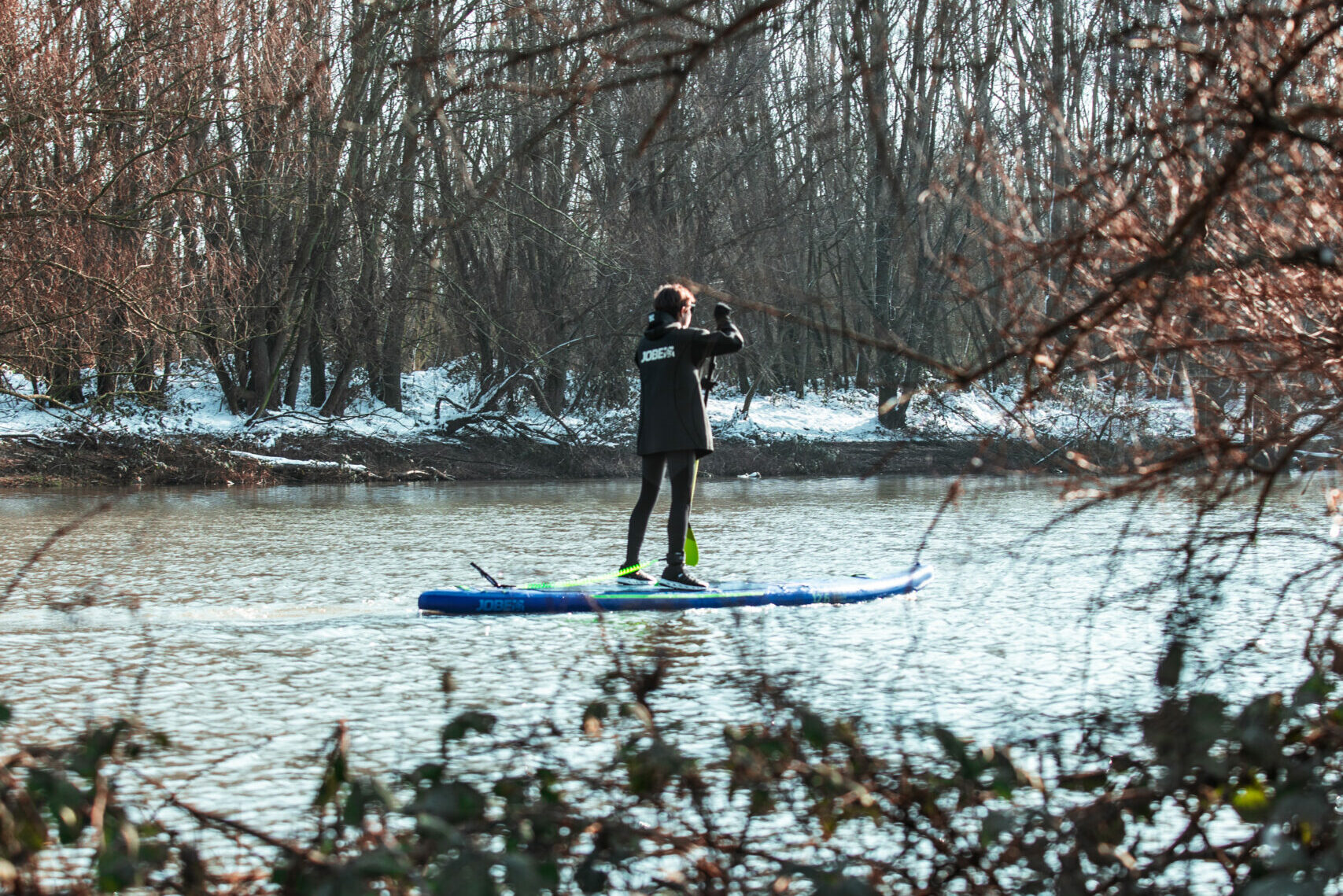
Facebook
Twitter
LinkedIn
Paddling into Autumn | 5 Cold-Weather Paddling Tips
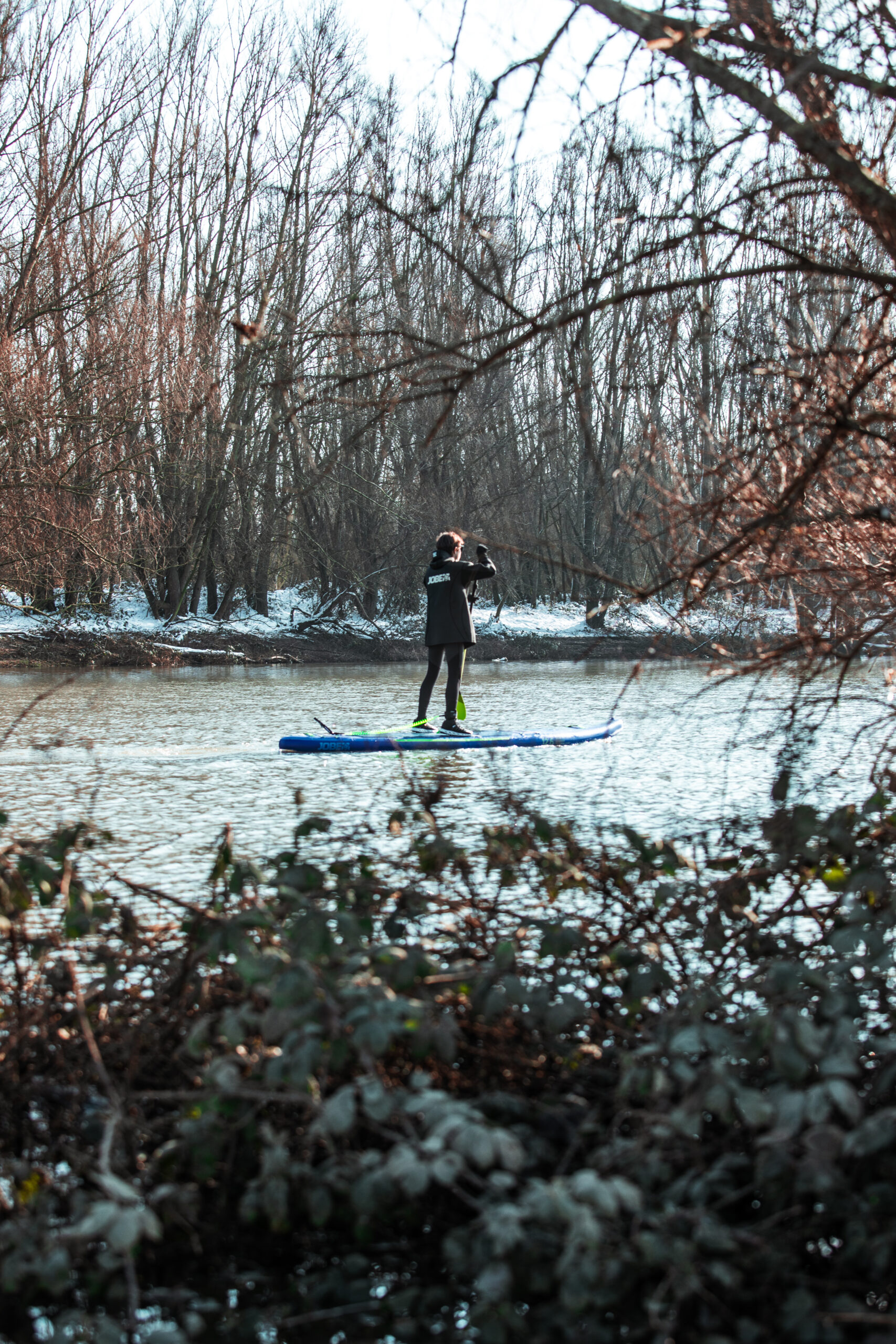
5 Cold-Weather Paddling Tips
So, it’s that time of year again. Hillsides are turning golden, leaves are being cast off and Starbucks are touting their latest pumpkin-caramel-hazelnut-cocoa-ginger latte (with marshmallows). While this may feel like time to hang up your wetsuit for the year, there is no reason to let the changing of the seasons deter you from being outside; in fact, the beautiful colours of autumn should make you want to get outside more!
Check out our top 5 cold-weather paddling tips for this autumn to make sure you can still enjoy the water.
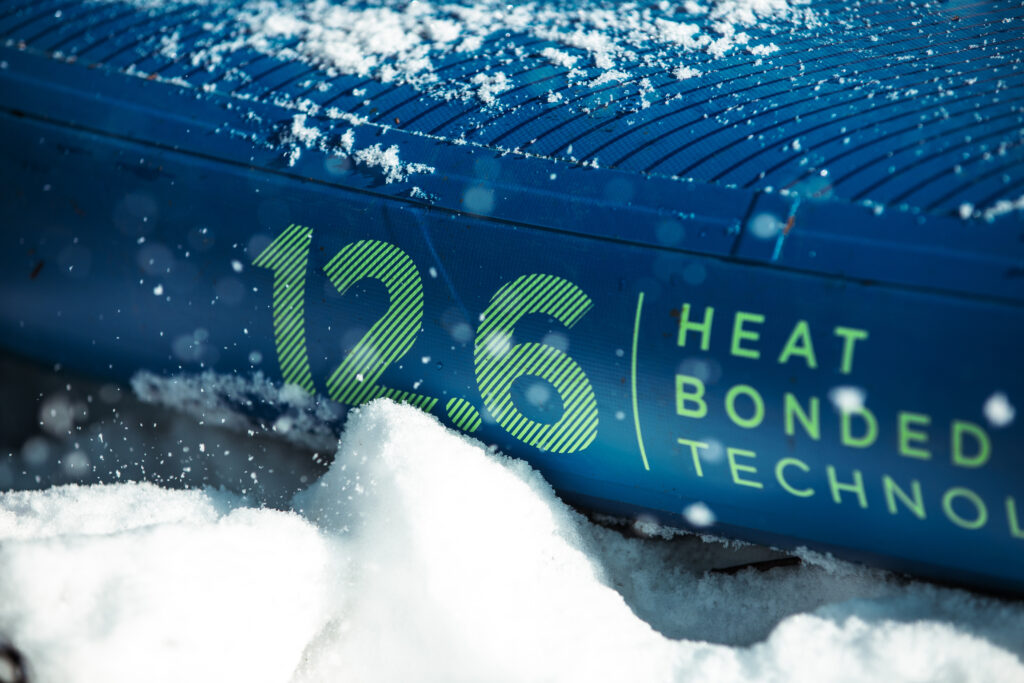
1. New Weather, New Rules
While paddling in autumn and winter can be hugely rewarding, it’s still important to bear in mind the risks associated. Make sure that you check the forecast before heading out, make a note of when the sun will set and avoid any bodies of water that have even slightly iced up.
For a great blog on the safety of winter paddling, head to Cruiser SUP!
2. The Extremities
When our bodies are cold, they focus our blood supply to the vital organs in an effort to warm us up. This method leaves our extremities – toes, hands and ears – feeling that bit chillier.
To combat the risk of having stiff hands, which are little use for trying to unclip a drybag, and for keeping the rest of you warm, I always bring these 3 things on an autumn paddle: a nice warm hat, neoprene gloves, and thick neoprene socks.
Note: In these cases, I am dressing for my feet and legs to be submerged, and for my hands to get at least somewhat wet; however, I am not ‘dressing to fall in’. If you think immersion is highly likely at some point during your paddle, or are going for an all-out surf, I would switch the bobble hat for a neoprene hood.
3. Layer, Layer, Layer!
Whether you paddle in a wetsuit, drysuit or prefer just to go in sportswear, layering up for colder adventures is always a must.
Everyone does their layering differently but you should always avoid cotton. If wet, cotton will soak up moisture, making you cold very quickly.
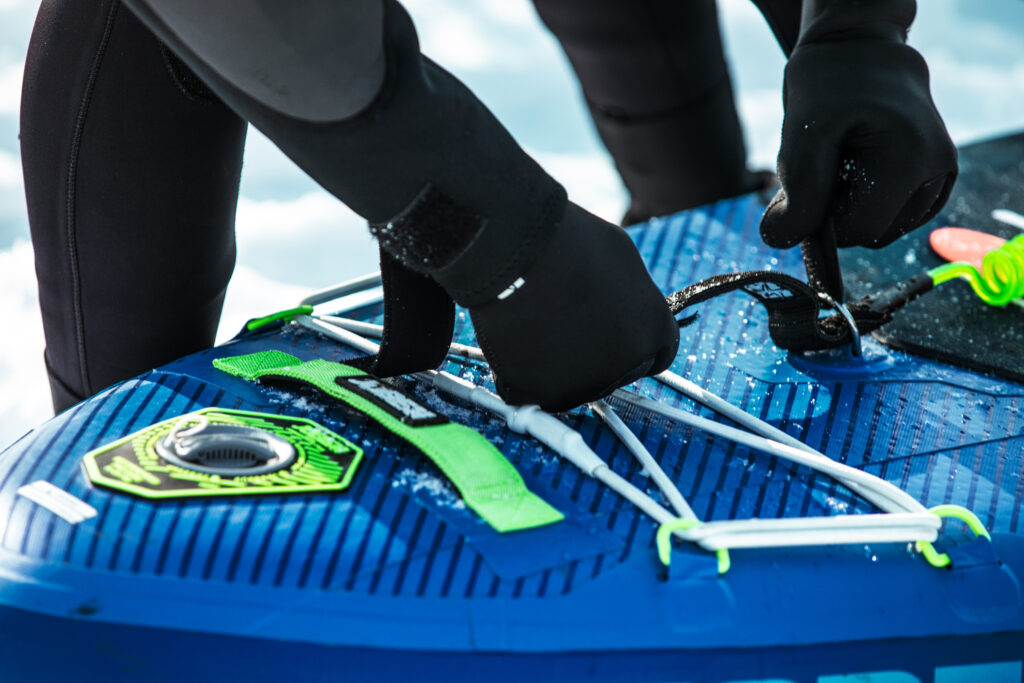
4. Post-Paddle Routine
Here, I take my advice primarily from the wonderful wild swimming community.
To gradually raise your body temperature, change swiftly after exiting the water and make sure to wear plenty of cosy layers. A warm flask is also a welcome addition to the post-paddle routine, and it’s even better with a slice of something sweet.
5. Play it Safe
Winter conditions can be far more grueling than those in summer so it’s important to play it extra safe when out this autumn.
Make sure that you have all appropriate safety equipment, including a buoyancy aid and leash, and try to stick with others where possible. If you are going out alone, let a close friend know where you’re going and when you plan to return!
Want to learn more?
- Be informed on Cold Water Shock
- Winter Paddling Guidance from British Canoeing
- Learn the Subtle Art of Warming Up
You May also be interested in...
Paddling into Autumn | 5 Cold-Weather Paddling Tips
5 Cold-Weather Paddling Tips So, it’s that time of year again. Hillsides are turning golden, leaves are being cast off…
Paddling the Largs Coast - SUP Diaries
Paddling the Largs Coast – SUP Diaries There’s one thing we kept saying on the drive down to Largs. “God,…
Paddleboarding on Loch Ard - A Gentle Spring SUP
Paddleboarding on Loch Ard – A Gentle Spring SUP Sitting just a few kilometres west of Aberfoyle, and in the…
SUP Waist Leashes - The Facts Behind the Frenzy
Waist leashes have been all the rage within SUP communities over winter, and for good reason. As the first wave…
So, you got a SUP for Christmas...
If I said that I wasn’t jealous of you got getting a SUP from Santa, I would be lying through…
SUP Safety - The Best Advice Collated
In light of the recent tragic events in Wales, our team would like to step away from buying guides and…

